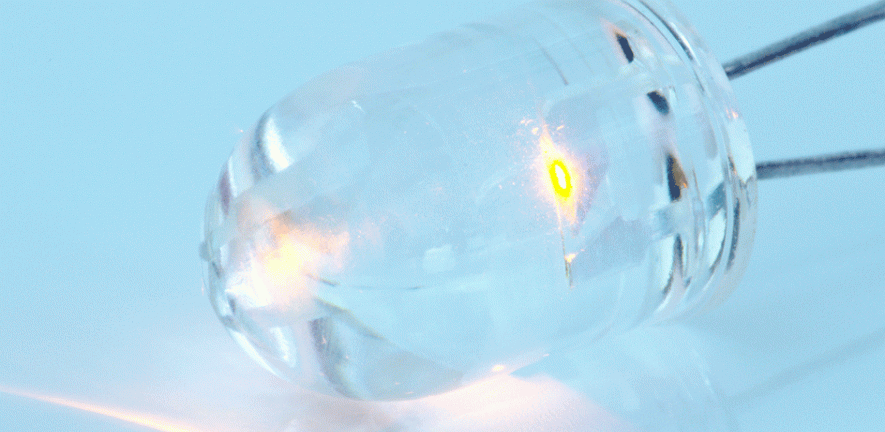
A new way of making LEDs could see household lighting bills reduced by up to 75% in five years time, thanks to research at Cambridge University.
A new way of making LEDs could see household lighting bills reduced by up to 75% in five years time, thanks to research at Cambridge University.
We are very close to achieving highly efficient, low cost white LEDs that can take the place of both traditional and currently available low-energy light bulbs.
Professor Colin Humphreys
The new LEDs use Gallium Nitride (GaN), a man-made semiconductor that emits a brilliant bright light but uses very little electricity. Until now high production costs have made GaN lighting too expensive for widespread use in homes and offices.
The Cambridge University Centre for Gallium Nitride, with funding from the Engineering and Physical Sciences Research Council (EPSRC), has developed a new way of making GaN which could produce LEDs for a tenth of current prices.
The new technique grows GaN on silicon wafers, which achieves a 50% improvement in cost and efficiency on previous approaches to grow GaN in labs on expensive sapphire wafers, used since the 1990s.
Based on current results, GaN LED lights in every home and office could cut the proportion of UK electricity used for lights from 20% to 5%. A reduction equivalent to the output of eight power stations.
A GaN LED can burn for 100,000 hours and therefore, on average, only needs replacing after 60 years. And, unlike currently available energy-saving bulbs, GaN LEDs do not contain mercury eliminating the environmental problems posed by their disposal. GaN LEDs also have the advantage of turning on instantly and being dimmable.
Professor Colin Humphreys, lead scientist on the project said: "This could well be the holy grail in terms of providing our lighting needs for the future. We are very close to achieving highly efficient, low cost white LEDs that can take the place of both traditional and currently available low-energy light bulbs. That won't just be good news for the environment, it will also benefit consumers by cutting their electricity bills."
GaN LEDs, used to illuminate landmarks like Buckingham Palace and the Clifton Suspension Bridge, are also appearing in camera flashes, mobile phones, torches, bicycle lights and interior bus, train and plane lighting.
Parallel research is also being carried out into how GaN lights could mimic sunlight to help 3m people in the UK with Seasonal Affective Disorder (SAD).
Ultraviolet rays made from GaN lighting could also aid water purification and disease control in developing countries, identify the spread of cancer tumours and help fight hospital 'super bugs'.
This work is licensed under a Creative Commons Licence. If you use this content on your site please link back to this page.





